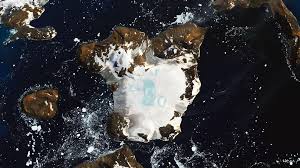
A nine-day heat wave burned Antarctica’s northern tip prior this month. New NASA pictures uncover that about a fourth of an Antarctic island’s snow spread melted in that time – an undeniably common symptom of the atmosphere emergency.
The pictures show Eagle Island on the northeastern landmass of the cold mainland toward the beginning and end of the current month’s Antarctic heat-wave. Before the finish of the nine-day heat occasion, a great part of the land underneath the island’s ice top was uncovered, and pools of meltwater opened upon its surface.
Antarctica encountered its hottest day on record prior this month, peaking at 64.9 degrees Fahrenheit. Los Angeles estimated a similar temperature that day, NASA said.
In a little more than seven days, 4 creeps of Eagle Island’s snowpack dissolved – that is about 20% of the island’s complete regular snow collection, NASA’s Earth Observatory said.
“I haven’t seen melt ponds develop this quickly in Antarctica,” Mauri Pelto, a geologist at Nichols College in Massachusetts, told NASA’s Earth Observatory. “You see these kinds of melt events in Alaska and Greenland, but not usually in Antarctica.”
Atmosphere researcher Xavier Fettweis plotted the measure of meltwater that arrived at the sea from the Antarctic promontory. The heat-wave was the most noteworthy supporter of ocean level ascent this mid-year, he said.
Disclaimer: The views, suggestions, and opinions expressed here are the sole responsibility of the experts. No Opinion Bulletin journalist was involved in the writing and production of this article.



